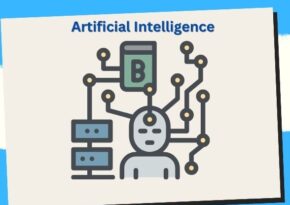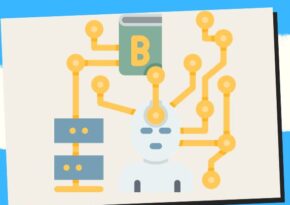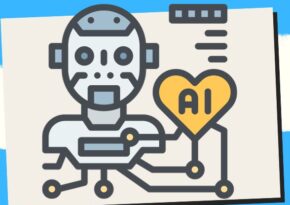
Building Awareness: Organizing Public Conversations on AI and Employment
Navigate the nuances of organizing community talks on AI and employment, fostering engagement and awareness among diverse stakeholders.
Bridging Perspectives: A Step-by-Step Guide to Organizing Community Discussions on AI’s Impact on Employment
In an era of rapid technological advancement, the integration of artificial intelligence (AI) into various industries raises significant questions about its impact on employment. As communities grapple with the potential disruptions and opportunities brought about by AI, organizing community discussions becomes essential for fostering dialogue, understanding diverse perspectives, and shaping informed policies. In this guide, we’ll walk you through the process of organizing impactful community discussions on AI’s impact on employment, empowering participants to explore, collaborate, and envision a future that works for all.
🌐 Understanding the Importance of Community Discussions on AI and Employment
Before diving into the logistics, let’s underscore why community discussions on AI’s impact on employment are crucial:
- Informed Decision-Making: Community discussions provide a platform for citizens, policymakers, and stakeholders to exchange insights, concerns, and ideas, facilitating informed decision-making on AI-related policies and initiatives.
- Empowerment and Engagement: Engaging the community in discussions about AI fosters a sense of ownership and empowerment, enabling individuals to participate actively in shaping the future of work in their communities.
- Diverse Perspectives: By bringing together diverse voices and perspectives, community discussions encourage critical thinking, empathy, and collaboration, leading to holistic solutions that address the needs and concerns of all stakeholders.
- Building Trust and Resilience: Open and transparent dialogue about AI’s impact on employment builds trust between communities, businesses, and governments, fostering resilience and adaptability in the face of technological change.
📝 Steps to Organize Community Discussions on AI’s Impact on Employment
Now, let’s outline a structured approach to organizing community discussions that foster constructive dialogue and meaningful engagement:
1. Define Objectives and Goals
Begin by clarifying the objectives and goals of the community discussions. Are you seeking to raise awareness, gather feedback, or co-create solutions? Define specific outcomes that you hope to achieve, keeping in mind the diverse interests and concerns of participants.
2. Identify Key Stakeholders
Identify key stakeholders who should be involved in the discussions, including representatives from local government, businesses, educational institutions, community organizations, labor unions, and affected populations. Consider reaching out to experts in AI, economics, sociology, and labor market analysis to provide insights and expertise.
3. Choose an Inclusive Format
Select a format for the community discussions that encourages inclusivity, participation, and dialogue. Options may include town hall meetings, panel discussions, workshops, focus groups, or online forums. Ensure that the chosen format accommodates diverse communication styles and accessibility needs.
4. Plan Engaging Content
Develop engaging content that serves as the foundation for the discussions. This may include presentations on the basics of AI technology, its potential impact on different sectors of the economy, case studies of AI adoption in other communities, and policy options for addressing employment challenges.
5. Facilitate Constructive Dialogue
Designate skilled facilitators to guide the discussions and maintain a respectful and constructive atmosphere. Encourage active listening, empathy, and open-mindedness among participants. Use interactive techniques such as small group discussions, brainstorming sessions, and Q&A segments to foster engagement and collaboration.
6. Capture Insights and Feedback
Deploy mechanisms for capturing insights, feedback, and recommendations generated during the discussions. This may involve live polling, written surveys, digital feedback forms, or collaborative note-taking platforms. Consolidate the collected data and distill key themes and recommendations for further analysis.
🔍 Key Considerations and Tips
- Accessibility: Ensure that the venue, format, and materials are accessible to all participants, including those with disabilities or language barriers.
- Diverse Representation: Strive for diverse representation among participants to ensure that a broad range of perspectives is heard and considered.
- Follow-Up and Action Planning: Develop a plan for following up on the outcomes of the discussions and translating insights into actionable steps, policies, or initiatives.
- Continuous Engagement: Maintain ongoing communication and engagement with the community beyond the discussions, keeping stakeholders informed and involved in decision-making processes.
Benefits of Organizing Community Discussions on AI’s Impact on Employment
- Increased Awareness: Community discussions raise awareness about the potential impact of AI technologies on local employment markets, fostering informed decision-making among stakeholders.
- Collaborative Problem-Solving: Engaging diverse voices allows communities to collaboratively identify challenges and develop strategies to mitigate negative impacts and capitalize on opportunities presented by AI.
- Empowerment of Vulnerable Groups: Community discussions provide a platform for marginalized and vulnerable groups to voice their concerns and advocate for equitable solutions to address potential job displacement and inequality.
- Knowledge Sharing: Participants share insights, experiences, and best practices, enhancing collective understanding of AI technologies and their implications for the future of work.
- Policy Advocacy: Informed community discussions can lead to advocacy efforts aimed at influencing policymakers to enact policies that promote job creation, reskilling, and workforce development in the context of AI.
- Building Social Cohesion: Community dialogues foster social cohesion by bringing together diverse stakeholders, fostering empathy, understanding, and solidarity in addressing shared concerns.
- Entrepreneurial Opportunities: Discussions on AI’s impact may inspire entrepreneurship and innovation within the community, leading to the creation of new businesses and job opportunities in emerging sectors.
- Preparedness for Change: By engaging in dialogue early, communities can better prepare for the changes AI may bring to local economies, enabling proactive adaptation and resilience-building measures.
- Inclusive Decision-Making: Inclusive community discussions ensure that all voices are heard, allowing for the co-creation of solutions that reflect the needs and aspirations of diverse stakeholders.
- Capacity Building: Organizing community discussions builds capacity within the community to critically assess, adapt to, and harness the potential benefits of AI technologies in the context of employment.
Case Studies: Successful Community Discussions on AI’s Impact on Employment
- TechTown Community Forum (United States): TechTown, a community organization, organized a series of forums where residents, local businesses, and policymakers discussed the impact of AI on employment and strategies for upskilling and workforce development.
- AI and Employment Roundtable (Canada): A coalition of labor unions, industry associations, and government agencies convened a roundtable discussion to explore the implications of AI on various sectors and develop recommendations for policy interventions to support affected workers.
- AI for Everyone Workshop (India): An educational institution organized a workshop on AI’s impact on employment, inviting students, educators, and industry professionals to share perspectives, brainstorm solutions, and foster collaboration in addressing future workforce challenges.
- Future of Work Summit (Germany): A local government initiative hosted a summit bringing together employers, trade unions, and academia to discuss the future of work in the context of AI, focusing on strategies for lifelong learning, job creation, and social protection.
- Community Conversations on Automation (Australia): A grassroots organization facilitated community conversations in rural areas to raise awareness about automation and its implications for local jobs, fostering dialogue on retraining, economic diversification, and community resilience.
- AI and Employment Webinar Series (United Kingdom): A research institute organized a webinar series exploring the intersection of AI and employment, featuring experts from academia, industry, and civil society to provide insights and facilitate discussions on emerging trends and challenges.
- Local Innovation Hub (Kenya): An innovation hub in a rural community organized workshops and hackathons to explore how AI technologies could be leveraged to create job opportunities and address local challenges, fostering entrepreneurship and economic empowerment.
- Youth Employment Symposium (Brazil): A youth-led organization organized a symposium to engage young people in discussions about AI’s impact on employment and opportunities for skill development and entrepreneurship in the digital economy.
- Tech Talks for Seniors (Sweden): A community center hosted tech talks specifically tailored for seniors to explore how AI technologies could affect older workers and provide guidance on digital literacy and retraining options.
- Community Futures Forum (New Zealand): A community development organization facilitated a futures forum where residents envisioned alternative futures in light of AI advancements, identifying strategies for inclusive economic growth and community well-being.
Key Takeaways for Organizing Community Discussions on AI’s Impact on Employment
- Stakeholder Engagement: Involve diverse stakeholders, including workers, employers, policymakers, educators, and community members, to ensure inclusive and comprehensive discussions.
- Facilitated Dialogue: Employ skilled facilitators to guide discussions, ensure equitable participation, and maintain a constructive and respectful atmosphere.
- Access and Inclusion: Make community discussions accessible to all by providing multiple formats (e.g., in-person, online, multilingual) and addressing barriers such as transportation or childcare.
- Focus on Solutions: Emphasize actionable solutions and strategies that empower communities to proactively address challenges and seize opportunities presented by AI technologies.
- Evidenced-Based Discussions: Ground discussions in empirical evidence and research findings to foster informed decision-making and dispel misinformation or misconceptions.
- Long-Term Engagement: Foster ongoing dialogue and collaboration beyond single events to sustain momentum, build trust, and facilitate collective action over time.
- Capacity Building: Offer resources, training, and support to empower community members with the knowledge and skills needed to navigate the complexities of AI’s impact on employment.
- Intersectional Approach: Consider the intersectionality of factors such as gender, race, age, and socio-economic status in discussions to ensure that diverse perspectives and experiences are taken into account.
- Policy Advocacy: Translate community insights and recommendations into actionable policy proposals and advocacy efforts to influence decision-making at local, regional, and national levels.
- Reflection and Adaptation: Continuously evaluate and adapt community discussion processes based on feedback and outcomes to ensure relevance, effectiveness, and responsiveness to evolving needs and priorities.
FAQs: Addressing Common Concerns about Community Discussions on AI’s Impact on Employment
1. Are community discussions on AI’s impact on employment only relevant for urban areas?
- No, community discussions are relevant for all areas, including rural and remote communities, as AI technologies have implications for employment across diverse contexts.
2. How can we ensure that community discussions are inclusive and representative of diverse voices?
- Actively engage with community organizations, networks, and leaders to reach marginalized groups and ensure their participation in discussions through targeted outreach and inclusive facilitation practices.
3. What role can local governments play in supporting community discussions on AI’s impact on employment?
- Local governments can provide resources, logistical support, and platforms for community discussions, as well as incorporate community feedback into policy-making processes to address local needs and priorities.
4. How can we address concerns about job displacement and insecurity during community discussions?
- Encourage discussions on strategies for reskilling, upskilling, and lifelong learning, as well as exploring opportunities for diversifying local economies and creating new job pathways in emerging sectors.
5. What resources are available to help communities organize discussions on AI’s impact on employment?
- There are various resources available, including toolkits, guides, and case studies provided by government agencies, non-profit organizations, research institutes, and international bodies, which offer practical advice and best practices for organizing community discussions.
6. How can we ensure that community discussions lead to actionable outcomes and tangible impact?
- Foster collaboration and partnership among stakeholders to develop concrete action plans, set measurable goals, and establish accountability mechanisms for implementing recommendations and monitoring progress over time.
7. How can we address skepticism or resistance to AI-related discussions within the community?
- Create spaces for open dialogue and respectful exchange of perspectives, provide accessible and engaging information about AI technologies and their implications, and emphasize the importance of community voice and agency in shaping the future of work.
8. What role can educational institutions play in supporting community discussions on AI’s impact on employment?
- Educational institutions can provide expertise, research insights, and educational resources to inform community discussions, as well as collaborate with local stakeholders to develop training programs and initiatives that address workforce needs in the AI era.
9. How can we ensure that community discussions are sustainable and continue to evolve over time?
- Foster partnerships and networks that can provide ongoing support and resources for community engagement efforts, establish regular forums or platforms for dialogue, and integrate community input into broader planning and decision-making processes.
10. What can individuals do to contribute to community discussions on AI’s impact on employment?
- Individuals can participate in discussions, share their experiences and perspectives, advocate for inclusive and equitable solutions, and take action to support community-led initiatives aimed at addressing workforce challenges in the AI era.
By organizing community discussions on AI’s impact on employment, stakeholders can foster collaboration, build resilience, and empower communities to navigate the complex challenges and opportunities presented by AI technologies in the realm of work. These discussions not only facilitate informed decision-making and policy advocacy but also strengthen social cohesion and collective agency in shaping a more inclusive and equitable future of work for all.
Conclusion
By following these guidelines and fostering inclusive and participatory community discussions on AI’s impact on employment, organizers can empower communities to navigate the complexities of technological change and collectively shape a future of work that is equitable, resilient, and inclusive. Together, let’s build stronger, more informed communities that thrive in the age of AI.
Key Phrases
- Community Discussions
- AI Impact
- Employment Landscape
- Job Market
- Collective Action
- Workforce Dynamics
- Future of Work
- Informed Dialogue
- Local Communities
- Economic Resilience
Best Hashtags
- #AIImpact
- #EmploymentDiscussion
- #CommunityTalks
- #FutureOfWork
- #JobMarket
- #WorkforceTransformation
- #EconomicImpact
- #CommunityEngagement
- #InnovationDialogue
- #LocalEconomy
Save/Share this story with QR CODE
Disclaimer
This article is for informational purposes only and does not constitute endorsement of any specific technologies or methodologies and financial advice or endorsement of any specific products or services.
📩 Need to get in touch?
Feel free to Email Us for comments, suggestions, reviews, or anything else.
We appreciate your reading. 😊Simple Ways To Say Thanks & Support Us:
1.) ❤️GIVE A TIP. Send a small donation thru Paypal😊❤️
Your DONATION will be used to fund and maintain NEXTGENDAY.com
Subscribers in the Philippines can make donations to mobile number 0917 906 3081, thru GCash.
3.) 🛒 BUY or SIGN UP to our AFFILIATE PARTNERS.
4.) 👍 Give this news article a THUMBS UP, and Leave a Comment (at Least Five Words).
AFFILIATE PARTNERS

World Class Nutritional Supplements - Buy Highest Quality Products, Purest Most Healthy Ingredients, Direct to your Door! Up to 90% OFF.
Join LiveGood Today - A company created to satisfy the world's most demanding leaders and entrepreneurs, with the best compensation plan today.



 Business Technology, Finance Technology & Information Technology
Business Technology, Finance Technology & Information Technology





